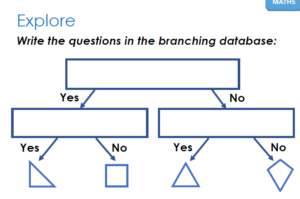Happy Friday everyone, we hope you’re all well. It has been so, so wonderful to see so many of your lovely faces this week. We can’t believe how much we’ve laughed and how much you’ve grown! We are so proud of you all and the soon-to-be Year 4s that you’ve become.
We can’t quite believe it but here is your penultimate Home Learning blog before the summer…
WELL BEING: Mind Yeti. Google Mind yeti and follow the videos.
 It’s been a hot week and you’ve had a busy few weeks with all your fantastic home learning. Take some time for you. You can do this alone or with members of your family – even with your friends over face-time or zoom.
It’s been a hot week and you’ve had a busy few weeks with all your fantastic home learning. Take some time for you. You can do this alone or with members of your family – even with your friends over face-time or zoom.
The mind yeti videos are all about mindfulness. Many of you may have lots of things going round in your heads, maybe lots of thoughts about school next year and how it will be, who your new teacher will be etc. Maybe things are starting to change again at home with parents returning to work. Maybe you are struggling to get to sleep at night because of the heat – watch the videos and try and do at least 10 minutes of Mind Yeti every day.
Topic: Chinese cuisine.
Have you ever eaten Chinese food? What’s your favourite?
Research Chinese cuisine (there is a PowerPoint to help you). Record any interesting information you find and then complete the activity below.
Fancy making Chinese food at home? Here’s a link to 10 family friendly recipes to try:
https://www.thespruceeats.com/chinese-food-recipes-for-kids-2097961
SPAG: Spelling- Your turn to be the teacher!
The following sentences have spelling errors. They will be found in spellings words we have covered this year. Can you proof read the sentence and correct the mistakes? Be careful as there may be more than one in each sentence.
1, The little girl skiped to school.
- The Cheshire cat smild at Alice with a wide grinn.
- I was unhapy when my football team lost there match.
- Their was just about enogh money in my purse to by the magazine.
- My freind doe’snt have a dog.
- The breaks on my bike weren’t working so I crashd into the pond.
- I wanted to where my spoty dress to the party.
- My sister was worryd that shed be late for school.
- My teacher thort I was being naughty but I was trying to be helpfull.
- Carlessly, I through away my train ticket.
Grammar:
- ROOT WORDS AND WORD FAMILIES.
Challenge: What does the root word mean? Can you think of other words that have it as a root word?
Challenge: Take the word believe as your root word. How many other words are in this family? E.g. believable, belief.
- VOWELS AND CONSONANTS:
What is a consonant? What is a vowel? Can you list them?
English:
Activity 1: Start or finish your dragon newspaper report from last week’s home learning. As said last week, this should have taken you quite a white as it is important to spend some quality time following the steps that we do in school when writing so that you produce the best piece of writing you can.
- Plan your writing
- Write your first draft
- Spend some time editing and improving – monkey ears, read it through with an adult, use a thesaurus to improve word choices, check all your sentences don’t start the same, check spelling and punctuation.
- Then publish – be proud of your hard work. There are many blank templates on line to help you present your work correctly. Here is a link to help https://www.twinkl.co.uk/resources/planning-writing-writing-composition-english-key-stage-1/writing-frames-and-templates/newspaper-templates
WHEN WRITING:
First, create a name for your newspaper and a headline for the article.
After that, write your newspaper article – remember to include:
- Who, where, when and what, how! Go back to your research to find this information.
- How people reacted and felt – this is a good time to use your speech.
- What is going to happen next (be creative)
- Conclude with somewhere that people can go / call / email for help, to give more information, for support.
SUPPORT: Use the example template for a similar news article that you can use a model to support you.
Challenge:
Vary your sentence structure: Can you use a fronted adverbial to show (e.g. Still shaking in fear, Mrs. Pike stated she was just so grateful that the children weren’t in school at the time of the attack.) Word mat provided to remind you of the options. https://content.twinkl.co.uk/resource/f5/c4/t-l-4647–fronted-adverbials-ks2-word-mat-list-_ver_6.pdf?__token__=exp=1592815621~acl=%2Fresource%2Ff5%2Fc4%2Ft-l-4647–fronted-adverbials-ks2-word-mat-list-_ver_6.pdf%2A~hmac=60e431cd62337003b83721978d6b06603200626e08fd5407893a343bd8ff2054
Can you use a subordinate clause (Mrs. Atkins, a year 3 class teacher, was shocked by the damage caused.)
Activity 2: POETRY
Look at the following Bitezize videos about different types of poetry.
https://www.bbc.co.uk/bitesize/topics/z4mmn39
Choose a style of poetry and write your own poem about dragons (you can write more than one in a different style if you’d like to.)
Use the following to help:
– the dragon poems from guided reading last week
– the dragon word mats from your previous home learning.
– the new dragon vocabulary sheet linked to this weeks guided reading.
REMEMBER: Use high level, creative vocabulary.
Challenges: You don’t have to do all of these but they are features of poetry to consider when planning and writing your own.
Can you make it rhyme? (But it still make sense)
Can you use alliteration?
Can you use similes and metaphors? (As, as or like – remember the song? https://www.youtube.com/watch?v=Hwq5ptwr_-4)
Can you use onomatopoeia?
If you’d prefer more guidance to create your own poems, follow this sequence of Oak Academy lessons…
https://classroom.thenational.academy/lessons/poetry-write-a-sound-poem
https://classroom.thenational.academy/lessons/read-the-example-and-identify-the-key-features-12d697
https://classroom.thenational.academy/lessons/key-feature-spag-focus-1d3400
Guided reading
Use the picture – discuss and record your responses in any way you wish. There is no right or wrong – use inference and your imagination.
- What can you see? What do you think is happening/has happened/will happen? What do you wonder? Complete the See, think wonder resource sheet.
- Who owns this boat? Where is it from? Where is it going? Who travels on this boat?
- What can you see beneath the surface of the water?
- What is the creature called? Describe the creature. Consider its eyes, mouth, legs, tail and other details.
- What is the creature doing?
- Why does it have the anchor chain in its mouth?
- Has the creature been asked to pull the boat in this way? Is it under control or out of control?
- Where is it taking the boat?
- Why is it acting in this way?
- Why are the fish swimming alongside the creature?
- Who is in the hot air balloons?
CHALLENGE
Write a 100-word story about this picture. Try to include some of the words on the dragon vocabulary page.
Maths
Here are the next three Oak academy lessons to complete.
https://classroom.thenational.academy/lessons/to-describe-the-properties-of-3d-shapesMaths
https://classroom.thenational.academy/lessons/to-identify-and-describe-symmetry-in-2d-shapes
https://classroom.thenational.academy/lessons/to-revise-shapes
Challenge one-
Challenge two-
Challenge three-
Challenge four-
Science
Have a go at this End of Unit Assessment to see how much you’ve learned about Forces and Magnets. Ask a grown up or older sibling to mark it for you using the answers page. If there’s an area which you could improve upon, re-read the previous weeks lessons or do extra research on BBC Bitesize https://www.bbc.co.uk/bitesize/topics/zyttyrd
Art from Mrs Pearson:
Art Challenge For Father Jeremy:

Father Jeremy has got a very special celebration coming up on 26th July this year. He will be celebrating 45 years since his ordination into the priesthood. I think this is a remarkable achievement and should be marked by your incredible artwork. Therefore, your Art challenge for the next fortnight is to produce a piece of art for Father Jeremy. This can take any form you like from street art, a drawing, collage or even some edible art! As well as being a priest, Father Jeremy has a wide range of interests including walking, reading and nature. So let your creative juices flow and come up with something spectacular…. I know you will!
As I have mentioned, this is a two-week challenge and I would ask that, as well as me displaying your art on the Blog, would you please keep hold of it (yes even sculptures you may make), so that I can collect it from you, when we are all back in school and put it in a book and then present in to Father Jeremy.
As always, you can still send any other art work to me and I will post that on the Blog too.
Please email your artwork to me:
n.pearson@stpeterswaterlooville.hants.sch.uk
Thank you
Keep creating and keep safe!
Mrs Pearson
Music from Mrs Sumba
Over the past few weeks, you have listened to 10 pieces of music composed by Musical Trailblazers. Go to the website below and listen to them again.
https://www.bbc.co.uk/teach/ten-pieces/ten-pieces-trailblazers/zfpy7nb
Which was your favourite and why?
Which was your least favourite and why?
Science from Miss Stapley
If your child has an allergy to eggs – please choose another exciting investigation from https://www.rigb.org/families/experimental
Bouncing Eggs
https://www.rigb.org/families/experimental/eggsperiments – watch the video
- Make an uncooked egg bounce!
- ExpeRiment with different liquids to see what effect they have on eggs.
- Learn how the acid in household liquids like orange juice and vinegar react with eggshells and make them dissolve, leaving the inside of the egg intact.
https://www.rigb.org/docs/dissolving_eggs_infosheet_v2_0_1.pdf – download worksheet for instructions and questions to ask before and after the investigation.
You will need:
5 eggs • Glasses or jars that an egg can fit inside comfortably • Cling film • Oil • Milk • Water • Vinegar • Orange juice
Going further challenge:
- You can use the shell-less eggs you make from this experiment to do another activity which will let you shrink and expand the eggs by placing them in different liquids: http://bit.ly/nakedeggs
- Watch a video of how to make a coloured bouncy egg, then try making one yourself: http://bit.ly/RubberEgg




